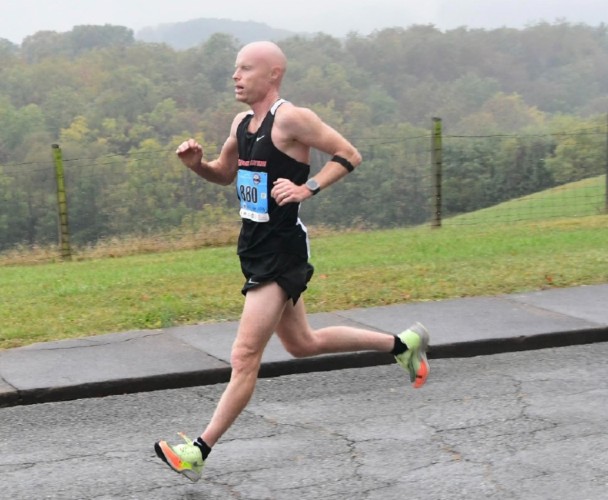
This past Sunday I headed to Charleston, WV, to meet up with my friend Jason Pyles and a group of other guys from the area to run the Charleston Distance Run (CDR) course. The above elevation profile is basically it (we ran about 3/4 of a mile before we got on the actual course and a little over a mile add-on at the end), and as you can see, it is a BEAST!
I'll start by saying that aside from the ridiculous humidity that morning, it was a great run. It was good to finally cover a few acres with Jason and they really have a good group up there. I think we started out with around 10 in our group, and I was amazed at how many other people were out running all or part of the CDR course that morning. It's definitely a big event for the area and people obviously get excited about it, which is really cool. Anyway, we started out relatively slow through the first several miles of the course then got rolling a little coming off the hilly section, and for the last several miles it was me, Jason, and Marshall Spradling knocking out miles in the high-6:30's and low 6:40's pretty comfortably. I actually felt better in the second half than I did in the first, which I don't know if it was shaking the race out of my legs or the way the course is laid out. Regardless, I enjoyed the run, appreciated the course preview, and hope to make it up there maybe one more time before race day on September 6.
Now on to my thoughts on the course. I've heard nightmare stories about this thing for years, so I was prepared for the worst. However, I have to say that it really wasn't all that bad. As you can see from the elevation profile, the majority of the course is relatively flat. It's just the one section that does all the damage. That section starts with a really long uphill at a fairly significant grade. Just as you top it, you turn left and go through a section that contains a lot of short, steep hills. After that, you leave that area with a long, fairly steep at times, downhill section. From there on out, it's back to being flat all the way to the finish on the track. For reference, according to my Garmin, the gain/loss per each mile of the hilly section is: 253/30, 175/48, 275/153, and 335/719. Yes, that's right, the last mile of hills has over 1,000 feet of net elevation change!
So, like I said, I wanted to put down my thoughts while they were fresh in my mind so I can look back on this before race day, and here's what I'm thinking. The key to running well is here is getting all the way through the hilly section in good shape. That means not only getting up the hills but also down them. I'll want to get out pretty conservatively so I hit the hills in good shape. They're too long and a few are too steep to attack, so the game plan will be as steady of a pace and effort as possible. Next comes what I think will be the key to the race, not pounding the downhill section. The legs will be a little tired from the uphill section, so running too fast down the hill will trash them completely and leave me shuffling to the line. However, if I can keep the stride relatively short (not over-stride) and come off the hill under control and feeling decent, I think I can get in a good rhythm from there on out and really roll to the line. Once you come off the hills there is plenty of distance left in which to make up time and places, and this is a course where running even or slightly negative splits could make a huge difference in how you do. Finally, the weather will play a big factor. If the humidity is extreme like it was this past Sunday, everything goes out the window and you have to be even more conservative.
So, that's it. As long as I can stay healthy between now and then and do some good training, I'm pretty much committed to racing there now and I'm looking forward to it. With a smart race, I think it's possible to run well on that course. However, anything less than smart, and you're likely looking at about a 7 mile death march to the finish line. Sounds like fun!

No comments:
Post a Comment